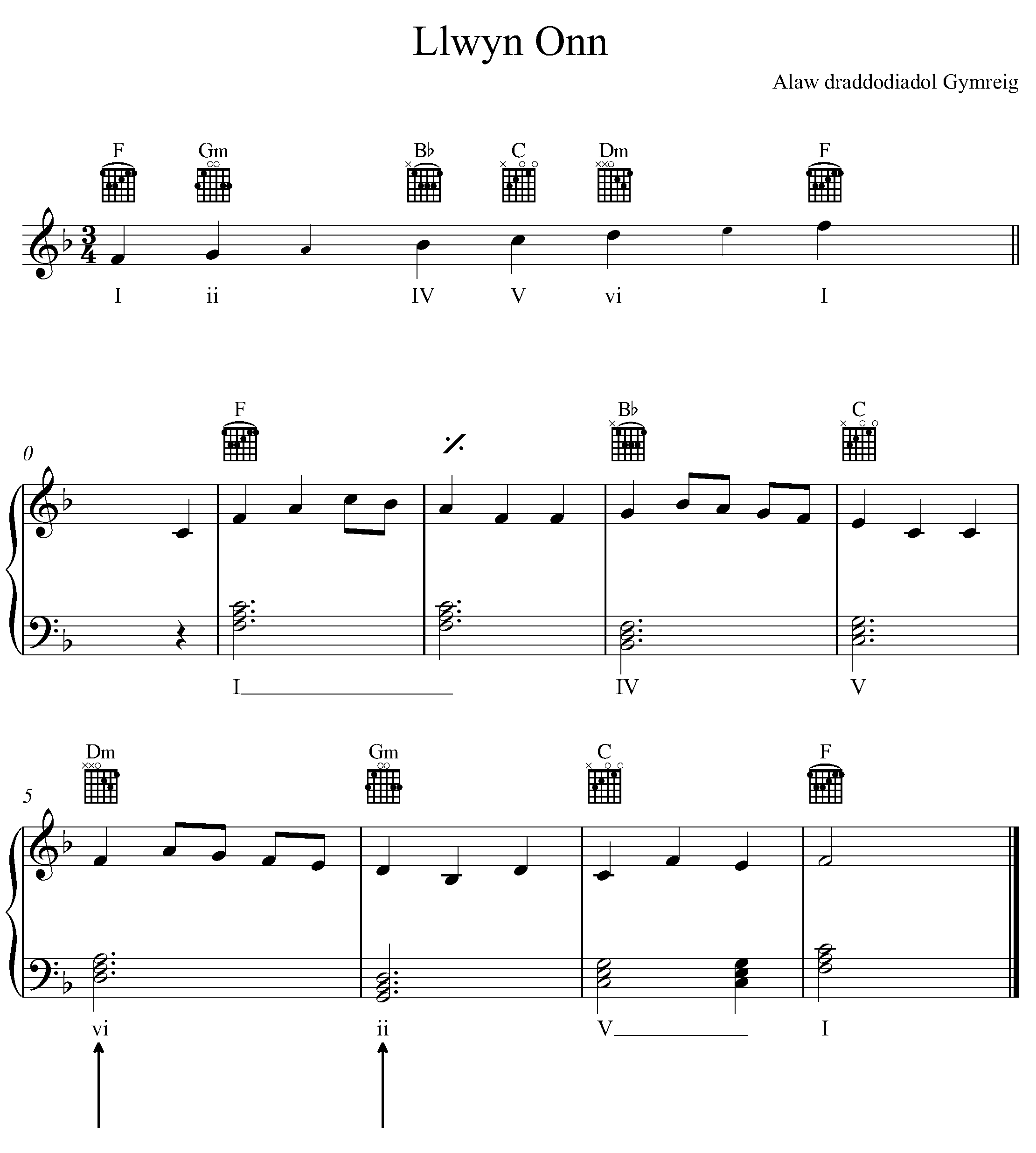A5 | Secondary chords
Look again at the F major scale. In A:3 Chords in root position, you learnt how to create primary chords on a major scale. You can also create chords on the notes of the supertonic and submediant.
ii = supertonic chord (G minor) vi = submediant chord (D minor)
In this component you will learn how to use chords ii and vi in root position, i.e.:
- the supertonic chord is based on the supertonic note;
- the submediant chord is based on the submediant note.
As there is a B♭ in the F major scale, the middle note of the supertonic chord makes it a minor chord. As a result, we use lower case Roman numerals to show that it’s a minor chord. The submediant is also a minor chord therefore vi is used.
Primary and secondary chords in F major
Fig. 1

supertonic
submediant

chord ii in F major is G-B♭-D
chord vi in F major is D-F-A
Click on this link to listen to the tune Llwyn Onn (The Ash Grove). The supertonic chord (ii) is used in bar 5 and the submediant chord is used in bar 6.
When composing, it is important that you rely on your ear to decide which chord sounds best with your tune. A perfect cadence is a very common way of completing a tune – look again at A4: Cadences. Here, you learn about ii-V-I (supertonic-dominant-tonic) which is very common progression at the end of a melody.
Fig. 2

You could use the tonic or submediant chord here as the F note in the melody is found in both chords.
You could use the subdominant or super-tonic chord here as the notes in the melody are found in both chords.
Click on this link to listen the traditional Welsh tune Ar Hyd y Nos (All Through the Night).
The ii-V-I progression can be used in the tune:
- In the first example, the chords are written as minims or block chords.
- In figure 3.2 the bass line has more variety in order to contrast the melody.
